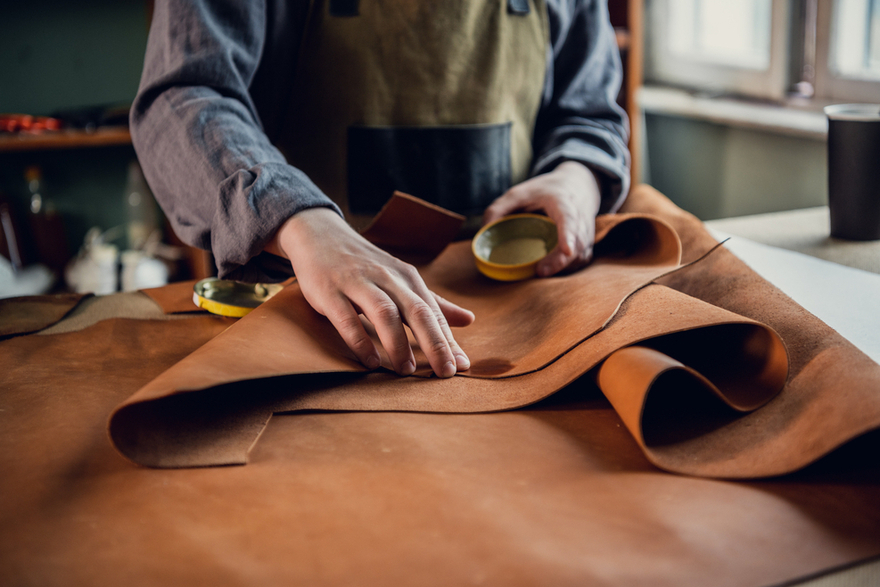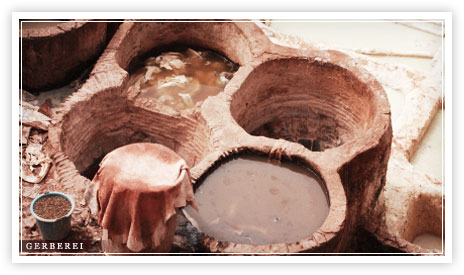
Tanning is the most important process in leather production. Chemical processing is used to turn animal hides into durable, supple, and high-quality cuts of leather. There are various methods that can be used, each of which produces different leather characteristics.
Tanning is the most important stage in the leather production. The quality of the tanning process determines the durability of the leather, which in turn determines the durability of the completed men's shoe.
Tanning arrests the natural process of decomposition
In principle, tanning merely involves soaking hides with tanning agents, which can be synthetic or vegetable-, oil-, or mineral-based. During this process, the existing hydrogen bonds in the hides are replaced with the durable tanning agents. This irreversibly binds the tanning agents to the hide, thereby significantly altering the hide's composition; a tanned hide, as compared to an untreated hide, is far more resistant to decomposition and temperature fluctuations. Tanned hides also retain their softness.
Although there are many different tanning methods, when it comes to high-quality, low-rise leather shoes, there are only three acceptable ones: oak pit tanning, vegetable tanning, and chrome tanning.
Different tanning processes achieve different leather characteristics
Each of these types of tanning imbues leather with specific characteristics that prove decisive for the leather's later uses. For example, chrome tanning creates leather that is soft, light, and flexible, and is therefore used to treat leather used to make shoe uppers. Oak pit tanning, on the other hand, is used to make leather soles; since this method relies upon natural extracts and forgoes synthetic speeding mechanisms, it takes many months to complete. Oak pit-tanned soles are very firm and resistant to abrasion. Finally, vegetable tanning is used to make leather lining. This method is entirely plant-based, resulting in hypoallergenic leather—a very important quality, since leather lining comes directly in contact with the skin of the foot. Vegetable-tanned leather is also breathable and scrub-proof.
As such, each tanning method results in leather with distinctive, special qualities. Of course, the various methods can also be combined with one another. For example, chrome-tanned uppers can be subsequently vegetable-tanned to create a softer feel.
Additional steps in leather production
Types of Leather
Handmade leather Shoes at Shoepassion.com
High-End Shoes for men & women ★ Various styles & designs ★ High quality ★ Fair & sustainably produced in Europe ★ Exellent value for money ★ Many models on sale














